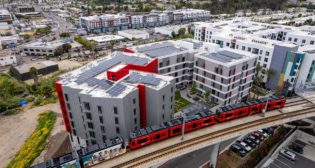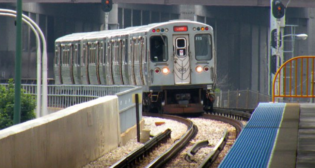
The RRIF program is open for business
Written by Administrator$7 billion is available for Class II and Class III railroads.
When the Mississippi Delta Railroad needed a modest $56,204 loan to finance grain loading equipment, the railroad and its owner, the C&J Railroad, secured financing through the Department of Transportation’s Railroad Rehabilitation and Improvement Financing (RRIF) program. When the Great Lakes Central Railroad (pictured) needed a substantial $17 million loan for capital improvements, it leveraged the RRIF program as well.
Examples like these should be routine, but for far too long, RRIF was woefully underutilized. The Bush Administration attempted to terminate the program, and we hear time and time again from smaller railroads that past bureaucratic hurdles led them to question whether the benefits were worth the effort. In contrast, the Obama Administration sees RRIF as a vital economic development tool for cities, towns, and rural areas across America.
Things are different now. The RRIF program is open for business. Secretary of Transportation Ray LaHood, Federal Railroad Administrator Joe Szabo and all of my colleagues at the U.S. Department of Transportation are committed to making the RRIF program an effective, reliable, and transparent source of financing to meet railroad capital investment needs.
The RRIF program was created to provide a steady, affordable source of financing that railroads could access for investment in track, signals, structures, equipment, and rail-oriented intermodal facilities. RRIF provides direct loans and loan guarantees at fixed, favorable rates to Class II and Class III railroads for up to 35 years. A total of $35 billion in loans is authorized to be outstanding at any given time, with $7 billion specifically reserved for “projects benefitting freight railroads other than Class I freight carriers.” Yet the program is scored by the Congressional Budget Office as having no cost to taxpayers.
President Obama has called upon Americans to recommit to “doing big things.” High on that list for us is building a world-class freight and passenger rail network. By 2050, the U.S. will be home to 100 million additional people. That’s like adding another California, Texas, Florida, and New York. This will require an additional 4 billion tons of freight to be transported every year and guarantees millions more commuters on our roads and highways. Our current system is already close to capacity. If we want to keep our country from getting stuck in neutral, we need to make major investments in rail today. Class II and III railroads will be a big part of the solution.
These necessary improvements will require predictable and significant funding sources. RRIF offers a responsible approach to supplementing capital investment for all types of railroads without adding a dime to the nation’s debt. By supporting Class II and III railroads, we can strengthen connections between smaller communities and the national rail system, increase fuel efficiency, lower air pollutant emissions, and reduce the strain on our highways.
After years of federal disinvestment in transportation and lack of commitment to the RRIF program, it’s fair for some railroads to take a “show me” approach today. Give us the benefit of the doubt. We’re hard at work reforming the program so that we can partner with railroads of all sizes to get America’s transportation system and economy back on track.
John D. Porcari is the Deputy Secretary of the U.S. Department of Transportation. More information is available at www.fra.dot.gov or by contacting the RRIF Program Manager, Barbara Amani at [email protected].



